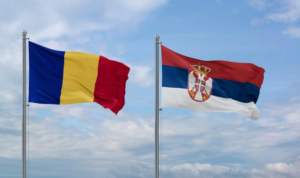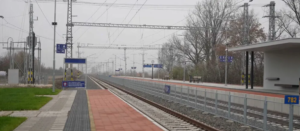
According to Serbian Economist, the first international Nikola Tesla Film Festival, dedicated to the life and legacy of Serbian-American inventor Nikola Tesla, will be held on January 7, 2026, in Las Vegas (USA) at the Palms Casino Resort.
According to the festival organizers, the goal of the event is to use film to show Tesla’s lasting influence on modern civilization—from electric power to wireless communications—while strengthening the cultural bridge between Serbia and the US.
According to their data, 120 applications have already been submitted from around the world, including the USA, Canada, Japan, India, European countries, Ukraine, Latin America, and Africa.
The program will include feature films and documentaries that explore the themes of science, innovation, and “visions of the future.” In addition to screenings, there will be cash prizes and a special prize—a Tesla statuette—as well as a separate award for projects created using artificial intelligence technologies, which, according to the organizers, will set a precedent for the US festival landscape.
The festival remains open to international submissions, with participation free for students to encourage young filmmakers to explore scientific and technological themes and the legacy of Nikola Tesla.
https://t.me/relocationrs/1972

According to the Serbian Economist, the investment company of Jared Kushner, son-in-law of US President Donald Trump, Affinity Partners, has withdrawn from the project to build a hotel and business complex on the site of the former building of the General Staff of the Yugoslav Army in the center of Belgrade.
According to Radio Liberty (Balkan service), the company has withdrawn its application for the project, which envisioned the construction of a luxury complex on the site of the General Staff buildings destroyed during NATO bombing raids in 1999.
According to a spokesman for Affinity Partners, the decision was made “out of respect for the citizens of Serbia and Belgrade,” as large projects “should unite, not divide” society.
The announcement of the company’s withdrawal from the project came against the background of the fact that on the same day, the Serbian Prosecutor’s Office for Combating Organized Crime filed an indictment against Culture Minister Nikola Selakovic and a number of officials. They are accused of abuse of power and falsification of documentation when the General Staff complex was stripped of its status of protected cultural heritage, which opened the way for commercial development of the site.
Kushner’s project during the year caused mass protests of the opposition, student and urban protection initiatives, which insisted on the preservation and restoration of the complex as an important monument of modernist architecture and a memorial site associated with the victims of the 1999 bombings. Activists called the investor’s rejection an “important victory,” but warned that the General Staff remains at risk of status changes and possible demolition in favor of other development projects.
The Serbian government and presidential administration had not commented on the information about Affinity Partners’ withdrawal from the project at the time of publication of the Radio Liberty piece.
Affinity Partners is a private investment company of Jared Kushner, created after his departure from Donald Trump’s administration and working with the capital of Middle Eastern and other institutional investors. In Serbia, the redevelopment project of the General Staff complex was realized through affiliated structures (including Atlantic Incubation Partners / Affinity Global Development) and envisioned an investment of about $500 million, a 99-year lease on the site and a profit share for the state of Serbia of about 22%, the New York Times and other media reported earlier.
https://t.me/relocationrs/1947

According to Serbian Economist, representatives of the Serbian and Romanian governments have recently officially confirmed their intention to develop a major transport project — to build a modern motorway that will provide a direct road link between the capitals of the two countries.
The project combines two national infrastructure plans:
— the Romanian A9 motorway (Timișoara–Moravița), which will connect Timișoara with the Serbian border, and
— the Serbian Belgrade–Vatin motorway with access to the Romanian border.
According to an intergovernmental agreement signed by the transport ministers of Serbia and Romania, both countries are working to agree on the technical details so that the roads connect at the border and create a continuous high-speed route from Belgrade to Timișoara.
In Romania, the section of the motorway between Timișoara and the Moravița border crossing is already in the preparation and design stage, and individual sections of the construction have been handed over to contractors.
This route is of strategic importance to both countries:
• It will strengthen transport links between the countries and improve freight and passenger transport logistics.
• The connection to the European motorway network will help integrate Serbian and Romanian infrastructure into European transport corridors.
The project is expected to be financed by both European funds and national budgets, and its implementation will be a step towards closer economic and transport integration in the region.
https://t.me/relocationrs/1926

According to Serbian Economist, regular rail service between Belgrade and Budapest will start on February 20: passengers will once again be able to travel between the two capitals by train without changing trains. After modernization, the line is designed for train speeds of up to 160 km/h, which significantly reduces travel time and makes the train competitive with road transport.
In fact, this is not only about the “return of the train” between the two capitals, but also about Serbia’s inclusion in the wider Central Europe-Balkans-Aegean Sea transport corridor. Belgrade is gaining a stronger role as a transit hub for freight and passenger flows, and the route is becoming more attractive for logistics and industrial projects.
https://t.me/relocationrs/1894

According to Serbian Economist, Serbia has once again become one of the leading foreign investors in Montenegro’s economy, ranking second in terms of direct investment in January-August 2025, behind only Turkey.
According to preliminary data from the Central Bank of Montenegro, the total inflow of foreign direct investment (FDI) for the eight months of 2025 amounted to €595.58 million, which is 3.46% more than in the same period last year. Net investment inflows reached €314.39 million, down 4.75% year-on-year.
Of this, €376.83 million (63.3% of total inflows) was accounted for by partial investments, mainly in real estate (around €308.9 million, +8.4%), while investments in companies and banks declined to less than €68 million. Approximately €197.1 million (33.1%) accounted for intercompany debt.
In terms of country structure, Turkey was the leader with €92.2 million, of which more than half accounted for intra-group debt, and approximately €35.5 million accounted for real estate purchases. Serbia came in second with €91.84 million, with Serbian investors investing around €60.9 million in real estate in Montenegro. Next came Germany (€43.5 million), the US (€41.6 million), and Cyprus (around €40 million).
The United Arab Emirates invested about €30.7 million, dividing the funds roughly equally between real estate and intercompany financing.
Russia, which was previously among Montenegro’s largest investors, has fallen to seventh place.
In terms of direct investment, Ukraine is not among the top five foreign investors in Montenegro, but Ukraine’s presence in the country’s economy is gradually expanding. According to data from Montenegro’s tax and customs authorities, in 2022 alone, Ukrainian citizens founded about 200 companies, which is about 3% of the total number of new companies created by foreigners during the year.
Earlier it was reported that against the backdrop of the war and the relocation of businesses to Montenegro, the number of Ukrainian citizens who received temporary and permanent residence permits has increased significantly, with Ukrainian companies mainly operating in the service, IT, and small business sectors.

According to Serbian Economist, Serbia’s commercial real estate market will develop around Belgrade and expressway and railway corridors over the next decade, with the most dynamic growth expected in the office and industrial-logistics segments, according to the analytical report “Serbia real estate & construction outlook 2025–2035.”
According to the document, by 2035, Belgrade’s high-quality office stock could increase to 1–1.2 million square meters. The main demand will be provided by IT companies, engineering centers, the financial sector, and international service centers, while in Novi Sad and Niš, more compact clusters of office space focused on technology and research are forming.
The report identifies industrial and logistics real estate as the fastest-growing segment. Experts predict that by 2035, the total volume of modern warehouse space in Serbia could double or triple, with key logistics hubs forming in the Belgrade–Pancevo–Simanovci, Novi Sad–Ruma–Inđija, Kragujevac–Kraljevo, and Niš–Leskovac, as well as along international corridors X and XI.
Individual industry reviews confirm the stability of the industrial segment: according to consulting company iO Partners, in the first quarter of 2025, there were more than 1.2 million square meters of Class A warehouse space on the Serbian market, with vacancy rates remaining at around 6.5% and base rental rates at €5 per sq m per month, indicating a balanced supply and demand structure.
The report identifies potential delays in infrastructure projects, high financing costs, and political cycles that could affect the timing of major development programs as risks for commercial real estate. As strategic recommendations, investors are advised to focus on energy-efficient offices and industrial parks linked to international transport corridors, while the authorities are advised to accelerate the harmonisation of building standards with EU requirements and the digitisation of procedures for commercial projects.